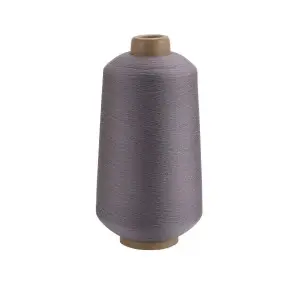The Main Applications of Nylon Hot-Melt Filament in Nonwoven Fabric Manufacturing
Introduction
In the realm of textile manufacturing, nonwoven fabrics have emerged as a versatile and indispensable material across various industries. Among the myriad of fibers used in their production, nylon hot-melt filament stands out due to its unique properties and wide-ranging applications.
Understanding Nylon Hot-Melt Filament
Nylon hot-melt filament is a specialized synthetic fiber known for its low melting point, excellent thermal plasticity, and inherent adhesive properties. When heated to a specific temperature, it softens and transforms into a viscos fluid with fluidity, capable of bonding with other fibers. Upon cooling, it solidifies, creating strong and durable bonds. These characteristics make it an ideal material for producing nonwoven fabrics that require high strength, flexibility, and thermal stability.
Applications in Hygiene Products
One of the most prominent applications of nylon hot-melt filament is in the hygiene sector. Products such as diapers, sanitary napkins, and incontinence pads rely heavily on the unique properties of this filament. In these products, nylon hot-melt filament serves as a binding layer, ensuring that absorbent polymers and other materials are securely held in place. This not only enhances the liquid distribution capabilities but also provides excellent leak-proof performance.
For instance, in the production of diapers, nylon hot-melt filament is used to bond the different layers of the diaper together. The filament’s low melting point allows it to be activated at relatively low temperatures, ensuring that the delicate absorbent core is not damaged during the bonding process. This results in a product that is both comfortable for the user and highly effective in its intended purpose.
Use in Filtration Materials
Nylon hot-melt filament is also widely used in the production of filtration materials. Its excellent thermal stability and chemical resistance make it suitable for applications where the filter material is exposed to high temperatures and corrosive environments. Filters made with nylon hot-melt filament can capture fine particles efficiently while maintaining good air permeability.
In the automotive industry, for example, air filters and oil filters often incorporate nylon hot-melt filament. These filters need to withstand the harsh conditions under the hood of a vehicle, including high temperatures and exposure to various chemicals. The durability and performance of nylon hot-melt filament make it an ideal choice for such applications.
Applications in Automotive Interiors
The automotive industry is another significant sector where nylon hot-melt filament is extensively used. In automotive interiors, this filament is employed to create various components such as seat covers, door panels, and headliners. The filament provides the necessary structural support and enhances the durability of these components.
For instance, in the production of seat covers, nylon hot-melt filament is used to bond different layers of fabric together. This not only ensures that the seat cover maintains its shape over time but also improves its resistance to wear and tear. The filament’s ability to bond with a variety of fibers, including natural and synthetic materials, makes it a versatile choice for automotive interior manufacturers.
Use in Carpet Backing
Carpet backing is another area where nylon hot-melt filament plays a crucial role. The filament is used to bond the carpet fibers to the backing material, ensuring that the carpet remains stable and durable. This is particularly important in high-traffic areas where the carpet is subjected to constant wear and tear.
In commercial settings, such as hotels and office buildings, carpets need to be both aesthetically pleasing and highly durable. Nylon hot-melt filament provides the necessary strength and stability to ensure that the carpet maintains its appearance and performance over an extended period.
Applications in Industrial Textiles
Beyond the aforementioned applications, nylon hot-melt filament is also used in various industrial textiles. These include materials used in construction, agriculture, and other industrial sectors. The filament’s ability to bond with different fibers and its resistance to environmental factors make it a valuable material in these applications.
For example, in the construction industry, nylon hot-melt filament is used to produce geotextiles. These textiles are used for soil stabilization, erosion control, and drainage applications. The filament ensures that the geotextile remains stable and effective under various environmental conditions.
Advantages of Nylon Hot-Melt Filament in Nonwoven Fabric Manufacturing
The use of nylon hot-melt filament in nonwoven fabric manufacturing offers several advantages. Firstly, its low melting point allows for energy-efficient production processes. This is particularly important in industries where reducing energy consumption is a priority.
Secondly, nylon hot-melt filament provides excellent bonding strength. This ensures that the nonwoven fabric maintains its integrity and performance over time. The filament’s ability to bond with a variety of fibers also makes it a versatile material, suitable for a wide range of applications.
Lastly, the use of nylon hot-melt filament reduces the need for adhesives and other bonding agents. This not only simplifies the production process but also reduces the environmental impact of the manufacturing process.
Conclusion
Nylon hot-melt filament is a versatile and essential material in the manufacturing of nonwoven fabrics. Its unique properties make it suitable for a wide range of applications, from hygiene products to industrial textiles.
Post time: Aug-15-2025

